Few buildings are more iconic to downtown Erie than the historic Warner Theatre. At 91-years-old, the luxury movie palace still offers an environment “twice as rich, three times more fanciful than life.”
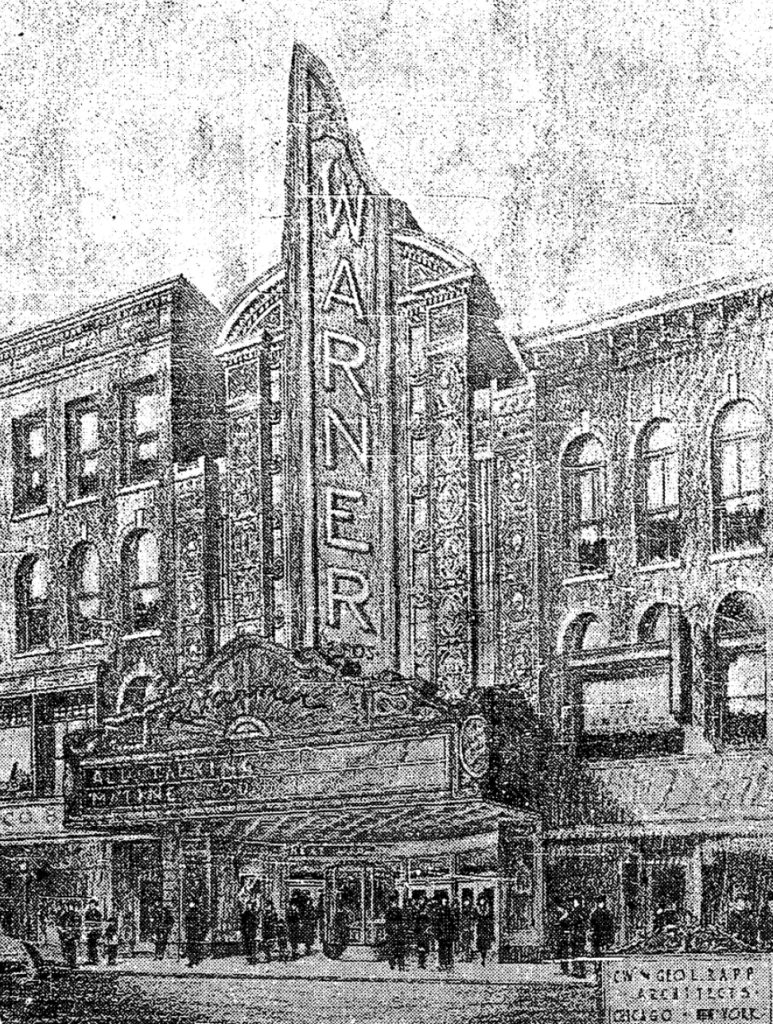
Commissioned by a subsidiary of Warner Brothers in 1929, the theatre was designed by preeminent movie palace architects Rapp & Rapp of Chicago and opened to the public in 1931. On April 9th, the day before the theatre’s gala opening, the Erie daily paper printed a special “Warner Theatre Section” that covered all aspects of the new Erie attraction and included the following descriptions of the marquee, façade, and lobby:
The electric sign on State St., which marks the new Warner theater is one of the biggest anywhere in the state of Pennsylvania.
Erected high over the marquee in front of the entrance to the new building, the sign runs to the top of the structure, announcing in bold letters by day and in brilliant electric lights by night that the place is “The Warner.”
The sign itself weighs ten tons, stamping it as unusual.
Eight thousand colored lights are placed in the sign for nighttime illumination…
Genuine Persian marble construction on outside walls, with appropriate scroll work.
The lobby of the theater runs one block – from State to French St., and is equipped with statuary, drinking fountains, genuine gold back French mirrors ceiling high, rich draperies, luxurious carpeting, and a winding stairway.
Two box offices, made of solid bronze, will greet the picture fan as he approaches the film house, and walls of solid bronze grilles and a floor of trai-tel-terrazzo are featured in the lobby.
The Warner Theatre was built as ”a one and one-half million dollar monument to the greatest industry in the country – motion pictures.”
A 20-year, phased restoration
In the 1970s, Erie Mayor Louis Tullio successfully lobbied for the Commonwealth of Pennsylvania to purchase the theatre, which was threatened by perceived obsolescence, and incorporate it into the proposed Civic Center Complex to avoid potential demolition. The Erie Area Civic Center Authority, now Erie Events, assumed responsibility for the physical and fiscal management of the state-owned theatre on August 15, 1977, and even listed it in the National Register in 1982.
Early in 1992, the Erie Area Fund for the Arts established the Metro Cultural Planning Committee, which was tasked with assessing Erie’s cultural needs. Improving the Warner Theatre was identified as the priority project. Creation of the Warner Theatre Master Plan and the Warner Theatre Preservation Trust in 1994 led to phase I, II, and III restoration projects being completed between 2002 and 2007.
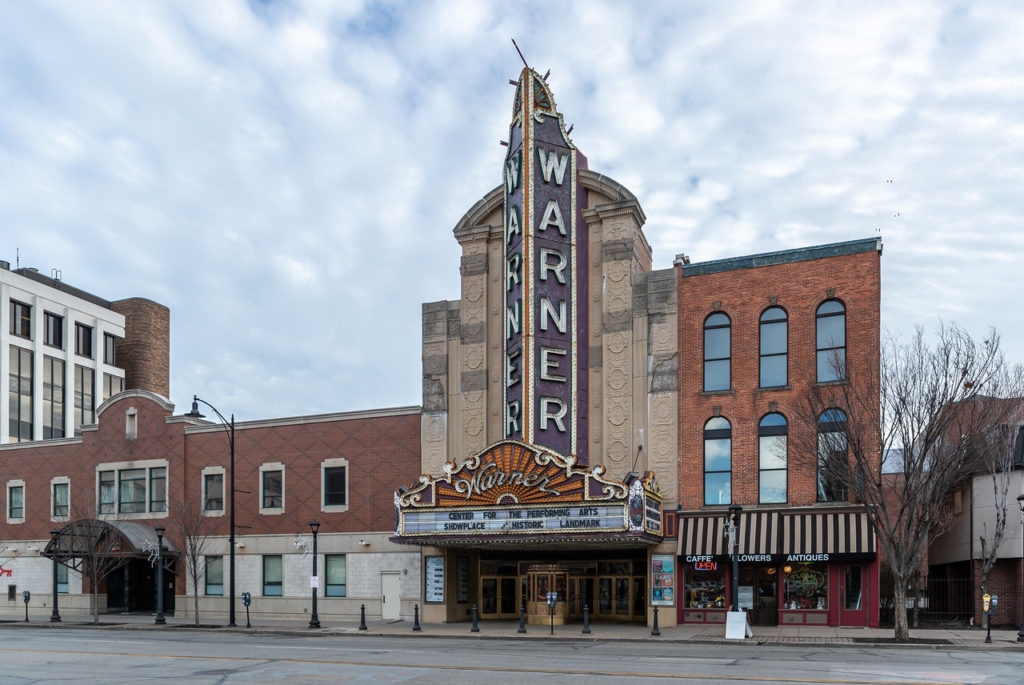
Phase IV, the final phase, began in 2020 at an estimated cost of $27 million and was seeded with a $16.5 million allocation from the state and $3 million in private donations from the Warner Theatre Preservation Trust and Erie Events’ own money.
The scope of work for phase IV, which was detailed by Chicago-based Coffey Group Architecture, included:
- a 14′ stage expansion,
- creation of 13,750 square feet of new backstage space,
- new rigging,
- stage lighting,
- updated sound system,
- new loading docks,
- rehearsal hall,
- customized orchestral shell,
- new HVAC equipment,
- and an enclosed walkway attached to the French Street side of the theatre and connecting the mezzanine foyer to the rehearsal hall.
Also included was the replication of the marquee, main curtains, and drapes, renovation of the grand lobby and restrooms, upgrades to the box office and outdoor video board, and replacement of the foyer and aisle carpeting.
Consulting under the Pennsylvania History Code
Late in 2019, rumblings of discontent over plans to remove and reconstruct the Warner Theatre’s marquee and blade were heard from the community. In response, Preservation Erie simultaneously contacted Erie Events and the PA State Historic Preservation Office (PA SHPO) to discuss consulting on the project under the Pennsylvania History Code.
The Pennsylvania History Code is state law that applies to historic preservation. It states that the SHPO is to be consulted on projects involving Commonwealth property and/or projects benefiting from Commonwealth funds which may affect a resource listed on or eligible for the National Register of Historic Places. The phase IV of the Warner Theatre restoration checked both boxes.
Committed to maintaining the historic character and integrity of this beloved community landmark, Erie Events welcomed the opportunity to engage both the PA SHPO and Preservation Erie in discussions of the marquee, exterior entrance and lobby, box office, restrooms, carpet, and the drapery and lambrequin.
The group, which included Casey Wells, Executive Director of Erie Events, Dan Coffey, project architect, Eric Larson, owner Empire Architectural Design + Sign, Barbara Frederick, PA SHPO Above Ground Resources Environmental Review Supervisor, Bill Callahan, PA SHPO Community Preservation Coordinator for the Western Region, and Preservation Erie board members Emily Aloiz, historic preservation specialist in material conservation, Dave Brennan, Senior Director of Bostwick Design Partnership Erie Office, and Melinda Meyer, public historian, met as-needed in 2020 and monthly from February 2021 to February 2022. All shared the singular goal to preserve the character and integrity of the Warner Theatre while also improving its function and technology.
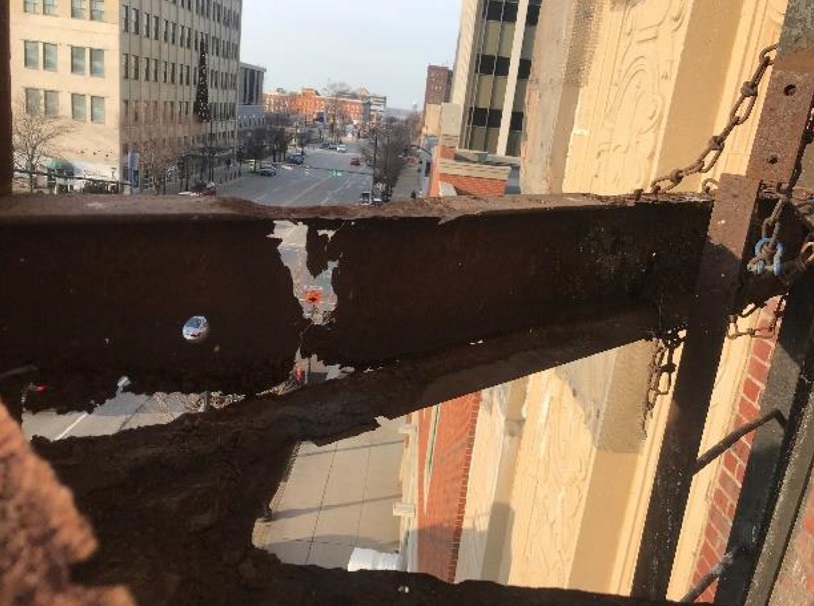
The original marquee canopy and blade were found to be significantly deteriorated, and the lights of the marquee had not functioned for more than 40 years. Following thorough documentation of the original structure, the entire marquee was removed by Empire Architectural Design + Sign, disassembled, and used as a template to fabricate a replica.
The Tiffany style glass located at the corners of the canopy, the State Street facing milk glass changeable reader board, and much of the decorative metal tile roof of the canopy were carefully removed and installed in the reconstructed marquee. To improve its function, LED bulbs replaced the existing incandescent bulbs and the north and south facing reader boards were replaced with digital displays.
When the marquee lights were turned on for the first time in 40 years on December 3, 2021, it featured the same operating sequence as opening night in 1931.
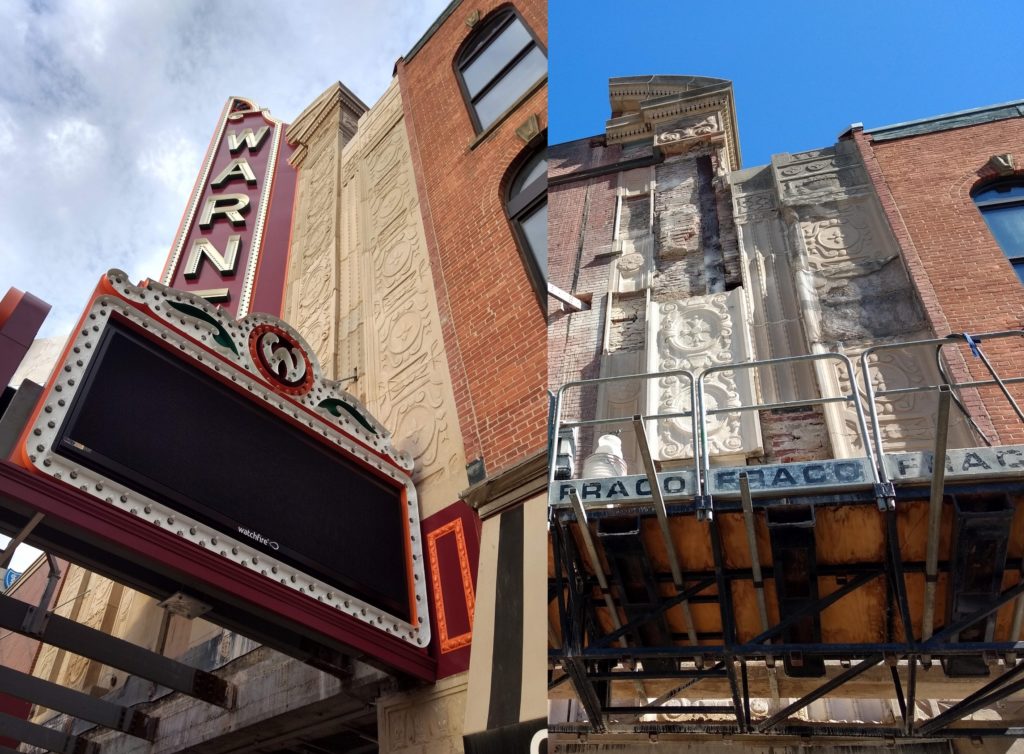
While the marquee was removed, the State Street façade was restored by Fiske and Sons. The theatre façade features 80 concrete precast stones, 24 of which needed replacement or repair. Creating replacement stones required Fiske and Sons to make 11 different molds to replicate the original stones. Each replacement stone was cast to match color, texture, size, and shape.
Though too much to detail in this blog post, similar care was taken when selecting the replacement carpet, replacement materials and features for the restrooms, fabric for the draperies and lambrequin, and repair/replacement terrazzo, and reviewing plans for an expanded box office.
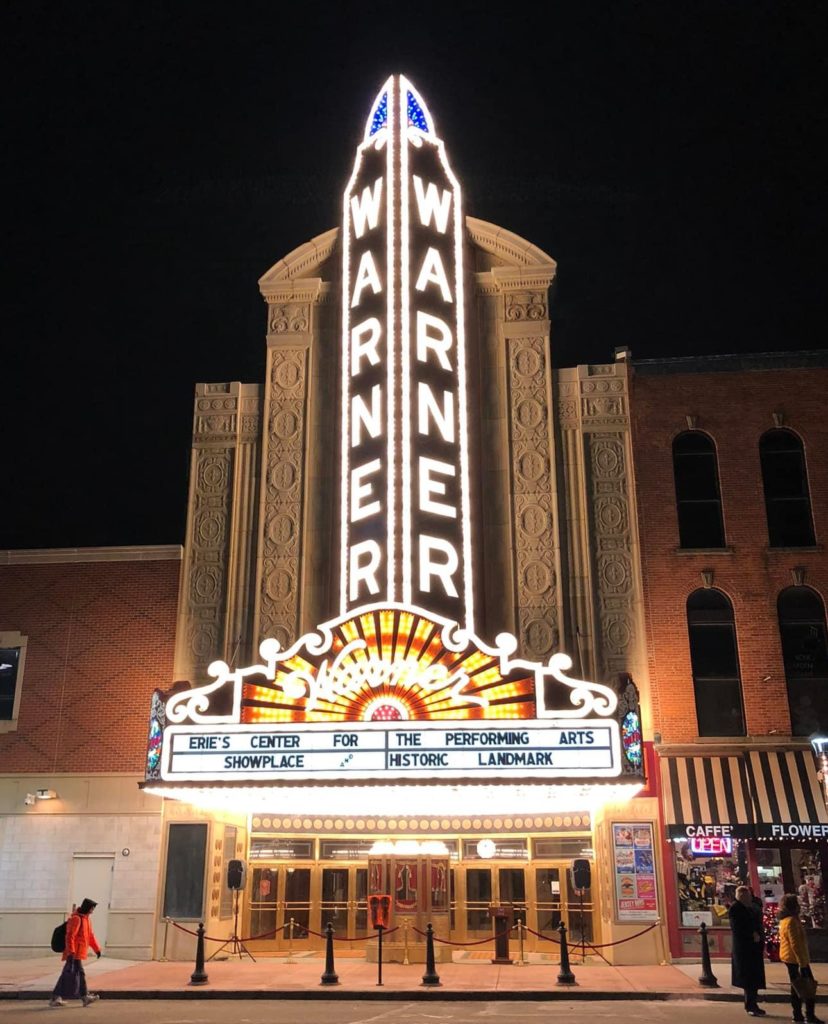
The Warner Theatre draws thousands of residents and visitors to the downtown area every year and is one of Erie’s most-recognizable historic and cultural assets. It is incredible to see this “deluxe” movie palace once again State Street’s shining star.
Today’s guest author is Melinda Meyer. As a public historian, Melinda has worked with and served the heritage and arts communities of Northwestern Pennsylvania for over 20 years. She is an active member of Preservation Erie, chair of the City of Erie’s Historic Review Commission, and has also taught museum studies and historic preservation undergraduate courses for Mercyhurst University. She currently works for the Erie County Department of Planning and Community Development as a grantwriter.
Comment Policy
PHMC welcomes and encourages topic-related comments on this blog. PHMC reserves the right to remove comments that in PHMC’s discretion do not follow participation guidelines.
Commenters and Comments shall be related to the blog post topic and respectful of others who use this site.
Commenters and Comments shall not: use language that is offensive, inflammatory or provocative (this includes, but is not limited to, using profanity, obscene, or vulgar comments); disparage other commenters or people; condone illegal activity; identify the location of known or suspected archeological sites; post personal information in comments such as addresses, phone numbers, e-mail addresses or other contact details, which may relate to you or other individuals; impersonate or falsely claim to represent a person or an organization; make any commercial endorsement or promotion of any product, service or publication.
If you would like to comment on other topics not related to this blog post but related to PHMC, please fill out the PHMC Contact Us Form.
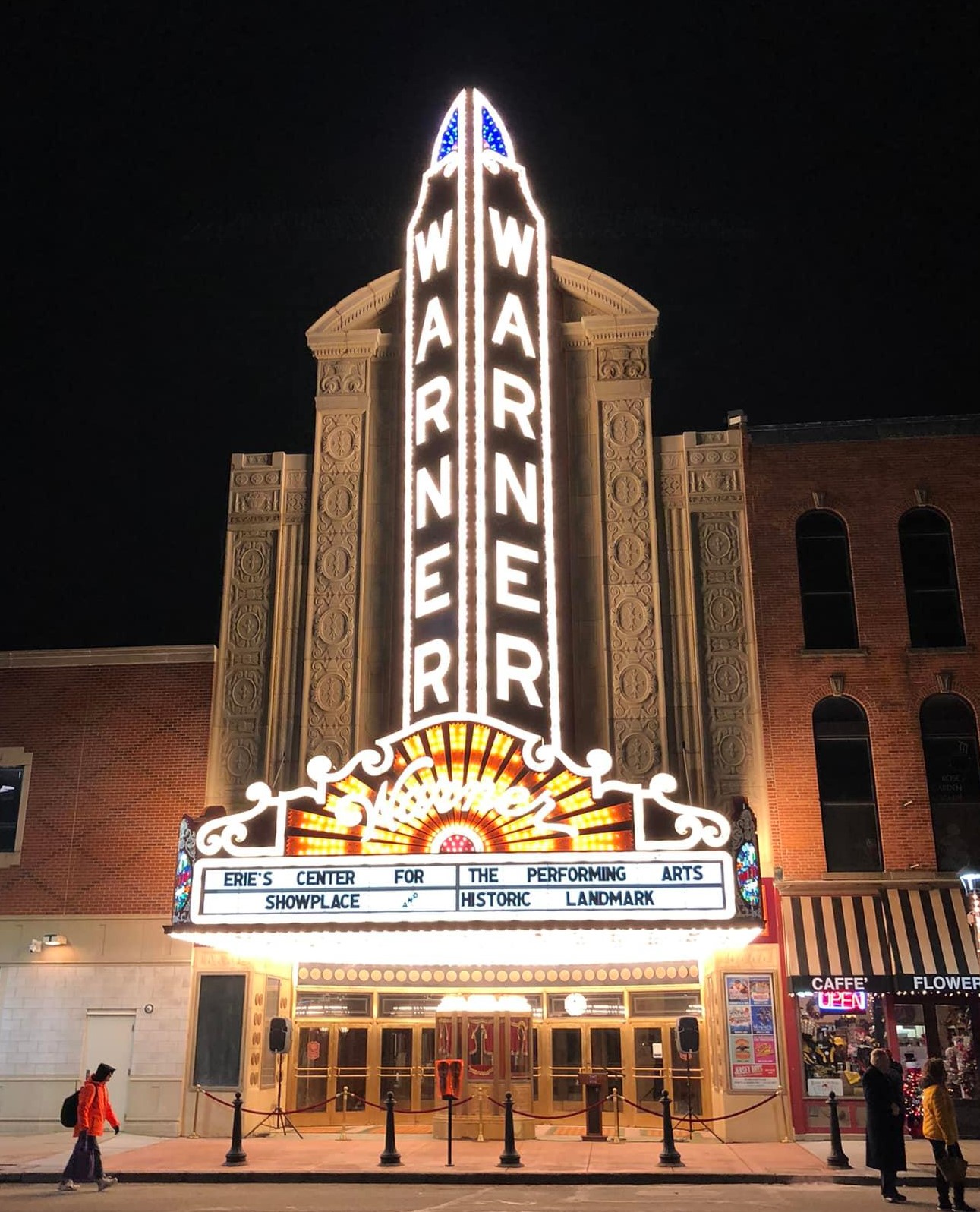
thanks alot of information keren